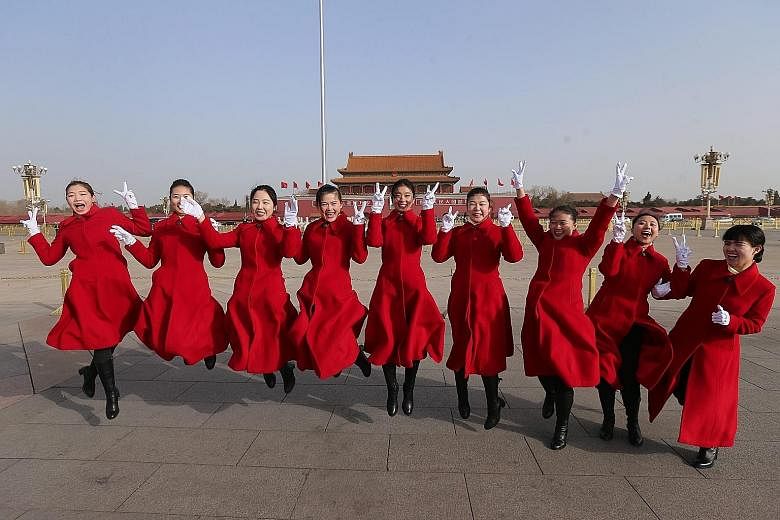China aims to have a more innovative, inclusive and environmentally friendly economy by 2020, dumping the "unbalanced and unsustainable" development it has pursued for nearly four decades.
To that end, it plans to raise its investment in research and development to 2.5 per cent of gross domestic product (GDP), up from 2 per cent now, while targeting to increase the contribution of scientific advances to economic growth from 55 per cent now to 60 per cent. It will also expand its high-speed rail network, grow its urban population and cut pollution, according to a development plan unveiled yesterday.
These measures will be the basis for the country's growth - with a target of at least 6.5 per cent annually - for the next five years, said Premier Li Keqiang when presenting the draft of the 13th Five-Year Plan at the opening of the country's annual parliamentary session.
The plan is a guide for economic and social progress until 2020. By then China hopes to have eradicated poverty and doubled its 2010 GDP and per capita income - important targets for the Communist Party's political legitimacy.
The plan builds on the "five development concepts" of "innovation, coordination, green development, openness and inclusiveness" espoused by President Xi Jinping at the party's Fifth Plenum last year.
Addressing about 2,900 delegates from the National People's Congress (NPC), Mr Li said it was imperative for China to adopt new technologies and industries while building up human resources and capital. These are part of the economic reforms China has been undergoing, as it aims to move away from traditional growth sectors such as steel, which are set to witness mass layoffs as the country slashes overcapacity.
"Obviously, replacing old drivers of growth with new ones... is a painful adjustment," Mr Li said. "But it is at the same time an upgrading process with great promise."
As part of China's urbanisation plans, he added, the government will grant urban residency to about 100 million people and create more than 50 million new urban jobs. By 2020, urban residents should account for 60 per cent of China's population, up from 56 per cent now.
The plan also pledged to protect the environment, increase the proportion of China's middle-income group and reduce the income gap, one of the world's worst today.
Mr Li said the plan's success centres on harnessing the potential of the people, whom he described as "an inexhaustible source of power". "We just have to get through this process, and we can, without question, reinvigorate the economy and ensure its dynamic growth."
Mr Zheng Xiaohe, an NPC delegate who works in the agricultural sector, said the plan was noteworthy for its "determination to alleviate poverty amid a slowing economy".
"Taken together with its pledge to promote green growth, you can see that China is more concerned about climbing the happiness index than the GDP ladder," he told The Sunday Times.

